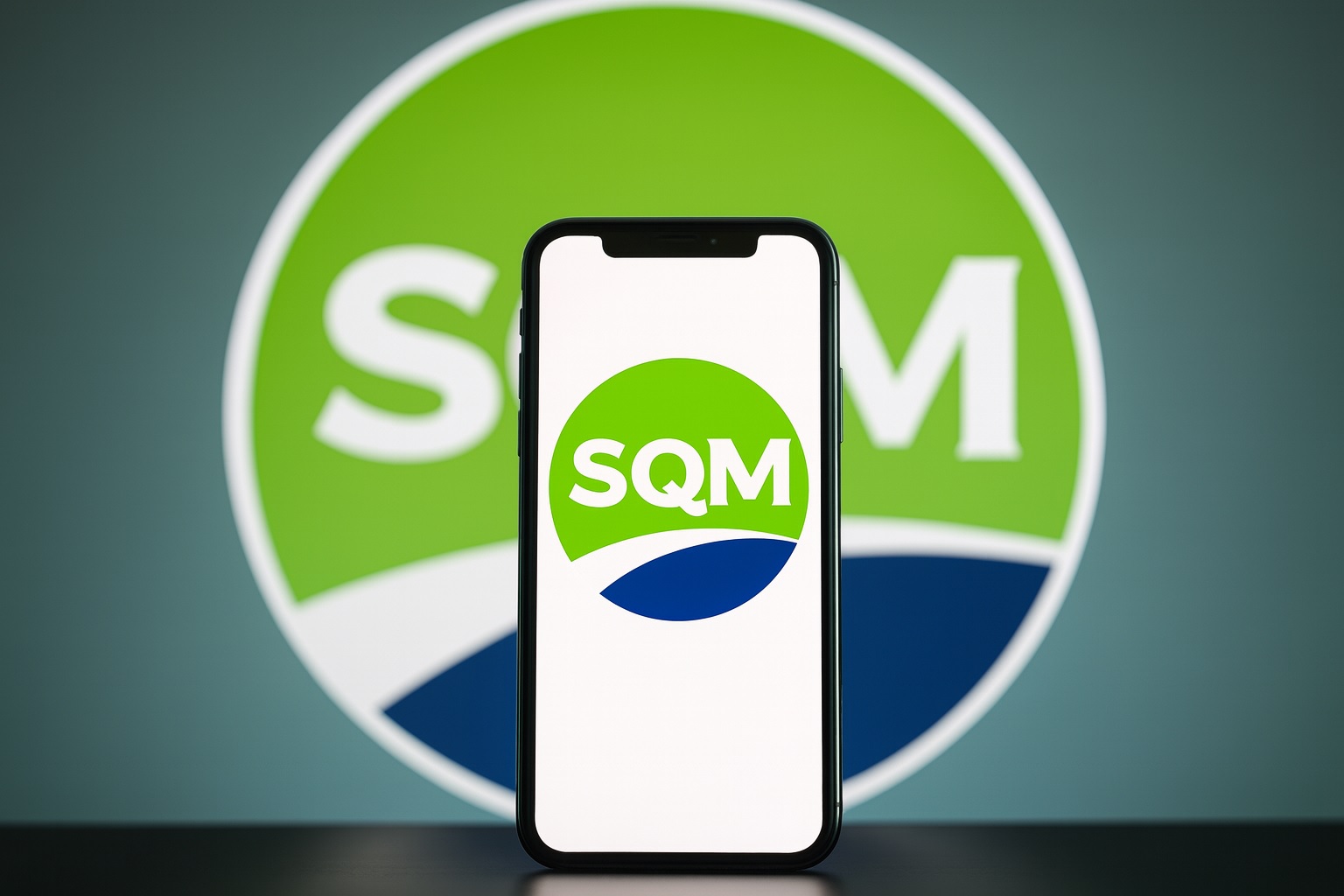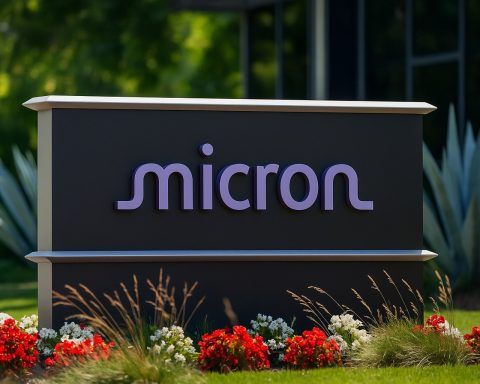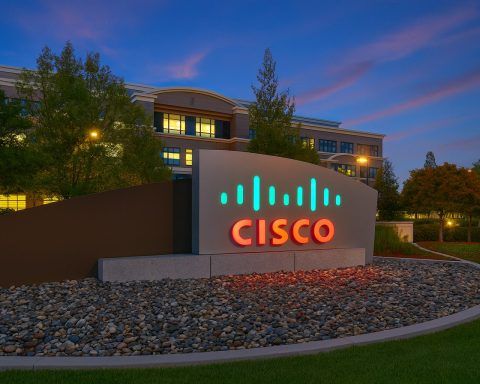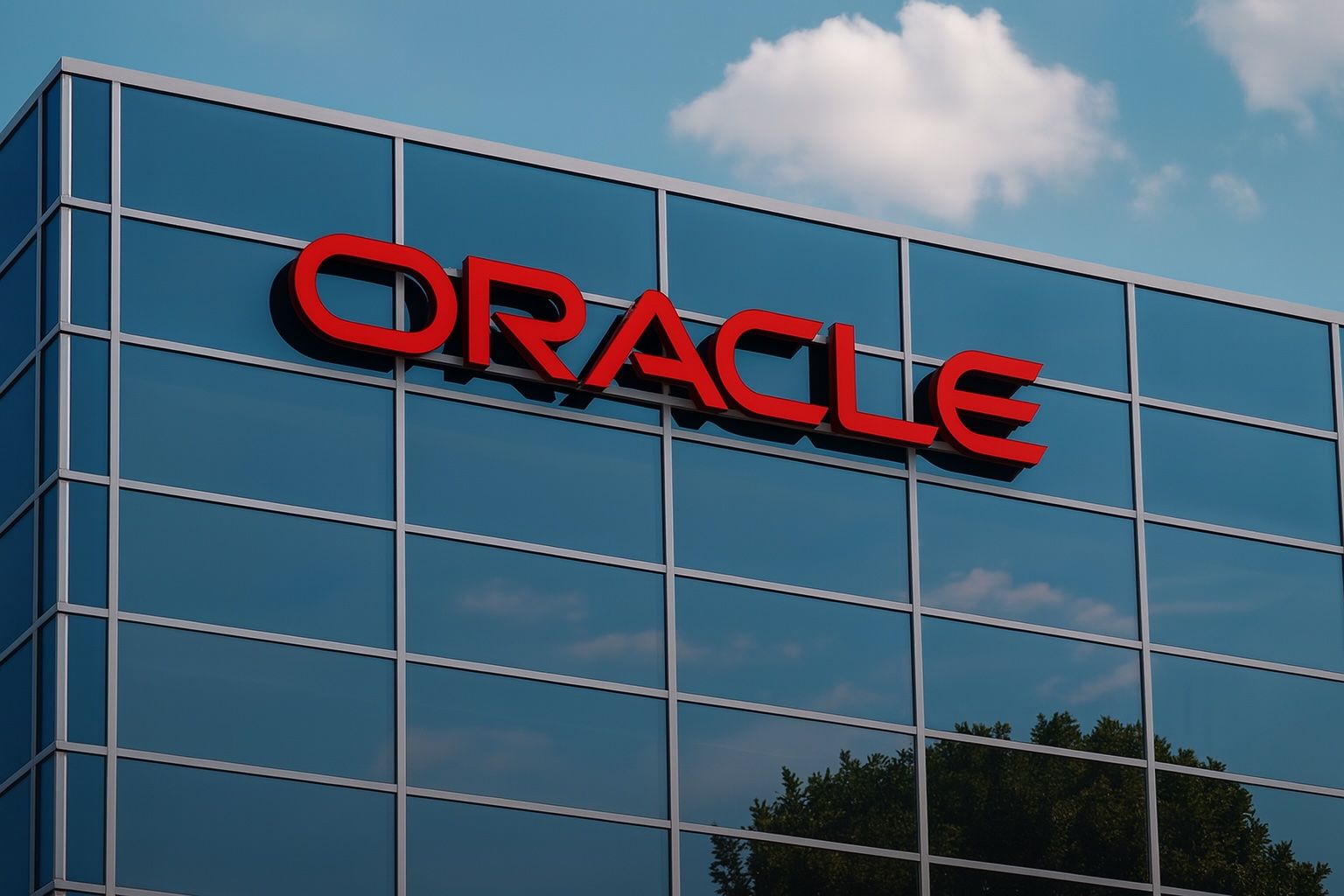Chilean lithium giant jumps ~12% on Monday as big funds buy in, lithium prices spike on China optimism, and investors brace for Q3 2025 earnings.
Sociedad Química y Minera de Chile S.A. (NYSE: SQM) is back in the spotlight.
By late morning on Monday, SQM’s New York–listed shares were up roughly 11–12% around $61, hitting fresh 52‑week highs and extending a sharp rally that began after China cleared its landmark lithium joint venture with state miner Codelco. [1]
Today’s surge comes as:
- Institutional investors disclose new and larger stakes in SQM
- Options activity and a new ‘Buy’ call fuel short‑term momentum [2]
- China signals much stronger lithium demand for 2026, sending futures and lithium stocks higher globally [3]
- The Codelco–SQM Atacama JV is confirmed as cleared by all major antitrust regulators, with China’s SAMR as the final hurdle [4]
- Q3 2025 results are due tomorrow, November 18, with the market expecting a rebound in earnings and volumes [5]
Here’s what’s driving SQM today – and what to watch next.
1. Big funds are quietly loading up on SQM
Fresh 13F and institutional disclosures published in recent days show a noticeable uptick in professional money flowing into SQM.
Itau Unibanco: a top‑26 holding
Brazilian banking giant Itaú Unibanco Holding S.A. has opened a substantial new position in SQM. According to a MarketBeat summary of the bank’s latest SEC filing, Itaú bought 919,538 SQM shares in Q2 2025, worth about $32.4 million. That stake represents roughly 0.32% of SQM’s share capital and accounts for about 1.1% of Itaú’s portfolio, making SQM the bank’s 26th largest holding. [6]
KBC Group NV and others add exposure
Another Monday headline highlighted that KBC Group NV increased its SQM stake by 5.4%, bringing its holdings to 118,007 shares worth about $4.16 million. The same report noted that heavyweight funds like Kingstone Capital, Nuveen, RWC Asset Advisors US, Lord Abbett and RWC Asset Management have all initiated or expanded sizeable positions in recent quarters. [7]
A separate filing‑based note flagged that Integrated Quantitative Investments LLC accumulated 47,583 SQM shares (roughly $1.68 million), adding another quant‑driven player to the shareholder register. [8]
Across these filings, MarketBeat estimates that hedge funds and other institutions now hold about 12.4% of SQM’s float, underlining a gradual build‑up of professional ownership even as analyst sentiment remains cautious. [9]
2. SQM stock rockets on options frenzy and analyst optimism
Today’s price action isn’t just about slow‑moving 13F filings – short‑term traders are piling in as well.
An intraday report from AInvest notes that SQM’s stock jumped about 11.38% and tagged a new 52‑week high near $60.9, with the move accompanied by: [10]
- Roughly $4.8 million in new institutional positions over the past two weeks from funds such as Toroso Investments, Boston Common and Scotia Capital
- A fresh ‘Buy’ initiation from Citi with a $100 price target, despite a recent earnings miss
- A spike in call‑option activity around the $60 and $65 strikes, with near‑dated $60 calls seeing implied volatility above 70% and strong turnover
Technically, AInvest’s data show:
- RSI in the mid‑70s (overbought territory)
- The share price well above its 200‑day moving average near $40
- A breakout above previous resistance, with the prior 52‑week high around the mid‑$50s now acting as support [11]
In other words, SQM has flipped from “left‑for‑dead lithium value play” to “momentum stock” in a matter of weeks – and that’s happening right as a major fundamental shift in the lithium market is taking shape.
3. Lithium sentiment flips as China signals a 2026 demand surge
Behind Monday’s broad lithium rally is a key message from China.
A widely circulated note from StockTwits, summarising a Bloomberg report, points out that the most‑active lithium carbonate contract on the Guangzhou Futures Exchange jumped 9%, closing limit‑up around 95,200 yuan (~$13,400) per tonne. [12]
At an industry conference, Ganfeng Lithium’s chairman Li Liangbin reportedly said he expects lithium demand to grow by around 30% in 2026, and warned that if growth hits 30–40%, prices could spike toward 150,000–200,000 yuan per tonne as supply struggles to keep up. [13]
On the same theme, an AInvest macro piece published today argues that:
- The modest lithium surplus in 2025 could flip to a deficit in 2026, with a projected shortfall of around 1,500 tonnes
- Electric vehicles still account for about 90% of lithium demand, but battery energy storage systems (BESS) and power‑hungry AI data centres are emerging as powerful additional demand drivers
- Forecasts for 2026 lithium carbonate prices range from roughly $8,900 to $17,000 per tonne, underscoring how volatile and uncertain the next leg of the cycle could be [14]
For SQM – one of the world’s lowest‑cost lithium producers with huge brine resources in Chile’s Salar de Atacama – any credible shift from surplus to deficit is a major potential tailwind.
4. Codelco–SQM Atacama JV: China’s approval removes the last big uncertainty
The other major pillar of the SQM story right now is structural, not cyclical: the long‑planned joint venture with Chile’s state copper company Codelco.
On November 10, China’s State Administration for Market Regulation (SAMR) granted conditional approval for the partnership, which will see Codelco and SQM jointly develop CORFO’s mining properties in the Atacama salt flat – effectively securing Chile’s lithium strategy through 2060. [15]
Key points from SQM’s Form 6‑K and subsequent commentary:
- SAMR’s approval is tied to commitments on three fronts:
- Safeguards against sharing sensitive information with other lithium market participants
- Enhanced corporate governance practices
- A requirement to supply minimum quantities of finished lithium carbonate to Chinese customers on fair, reasonable and non‑discriminatory (FRAND) terms, with a price cap linked to market benchmarks [16]
- SQM says these commitments are broadly consistent with its existing business practices in China and that, had they been in place since 2023, its results “would not have changed substantially,” implying limited direct earnings impact from the remedies themselves [17]
A case note published today by Compass Lexecon, which advised the parties during the antitrust process, confirms that Chile’s FNE cleared the deal in April 2025 and that SAMR’s November 10 approval was the last major regulatory hurdle, giving the JV a “final green light” from competition authorities. [18]
What’s still pending? A formal sign‑off from Chile’s Comptroller’s Office, which officials and Codelco expect by year‑end – widely viewed as a procedural step at this stage. [19]
Why it matters for investors
The JV does three critical things for SQM:
- Locks in access to some of the world’s richest lithium brine resources to 2060
- Aligns SQM squarely with Chile’s National Lithium Strategy, reducing political and concession risk
- Formalizes a structure where the state participates in long‑term upside, which could help de‑risk future expansion approvals
In the medium term, it also means SQM will be under closer scrutiny on pricing and supply into China, which is now codified via FRAND commitments.
5. Fundamentals: from 2024 losses to 2025 profitability – but margins are still under pressure
Beneath the share‑price fireworks, SQM’s financial picture in 2025 has been a story of volume growth, price pressure and recovery from one‑off hits.
Q1 2025: big swing back to profit
For the three months ended March 31, 2025, SQM reported: [20]
- Revenue of $1.04 billion, down 4.4% year‑on‑year
- Net income of $137.5 million ($0.48 per share) vs. a net loss of $869.5 million in Q1 2024, when results were hit by a large one‑time tax adjustment
- Lithium sales volumes up about 27% year‑on‑year, driven by EV demand in China and growing energy‑storage markets
- Gross margin down to 29.4% from 34.0%, reflecting lower lithium prices
Management also cautioned that lithium prices were weakening into Q2 2025 due to oversupply, even as the iodine division enjoyed record prices and 1–2% annual demand growth.
H1 and Q2 2025: profitability holds, but earnings compress
In August, SQM reported results for the six months ended June 30, 2025: [21]
- First‑half revenue of $2.08 billion, 12.6% lower than the same period in 2024
- Net income of $226 million ($0.79 per share) vs. a $655.9 million loss a year earlier
- Q2 2025 net income of $88.4 million ($0.31 per share), down 58.6% from Q2 2024
- Q2 revenue of $1.04 billion, down 19.4% year‑on‑year
CEO Ricardo Ramos highlighted that some long‑term contracts had hit lower price floors, limiting volumes in Q2, but guided for about 10% growth in lithium volumes from the Atacama operations for full‑year 2025 and pointed to first production at the Kwinana/Mt Holland lithium hydroxide project in Australia. [22]
Analyst view: a rally against a “Hold” consensus
Despite today’s surge, Wall Street remains cautious:
- MarketBeat data show 3 Buy, 7 Hold and 1 Sell ratings, for an overall “Hold” consensus
- The average price target sits around $46.80, meaning the stock now trades well above the Street’s 12‑month target after its recent run into the low $60s [23]
- Several services still model a small full‑year loss per share (around –$1.3) before earnings normalize in 2026 [24]
That disconnect – momentum‑driven share price vs. still‑modest earnings power at current lithium prices – is exactly what makes tomorrow’s Q3 numbers so important.
6. Q3 2025 earnings arrive tomorrow: what the market is watching
SQM will publish its Q3 2025 financial results after the U.S. market close on Tuesday, November 18, followed by a conference call on Wednesday. The date is confirmed on the company’s investor‑relations calendar and multiple earnings calendars. [25]
Across sell‑side and data providers, consensus expectations cluster around:
- Revenue of roughly $1.14–1.15 billion, up about 6–7% year‑on‑year
- EPS of about $0.68–0.72, implying a sharp improvement vs. Q2’s $0.31, but still far below the boom‑time profits of 2022–2023 [26]
Investors will be laser‑focused on:
- Lithium sales volumes vs. realized prices
- Does SQM deliver on its guidance for higher volumes from Atacama and Australia?
- Are spot and contract prices finally stabilising after the 2024–2025 slump? [27]
- Iodine and specialty plant nutrition (SPN)
- Iodine has been SQM’s most profitable segment, with gross margins around 57% and contributing more than half of total gross profit in Q2. [28]
- Investors will want to see if those margins hold as volumes normalise.
- Capex and JV implementation details
- Any updated guidance on Codelco JV timelines, capital spending and production ramp‑up will be closely scrutinized. [29]
- Balance sheet and dividend policy
- After years of hefty payouts, SQM’s forward dividend yield is currently effectively 0%, with the last ADR dividend paid in May 2024. [30]
- The market will be looking for clues on when – and at what level – regular dividends might resume once the next capex wave is under way.
With the stock already pricing in a lot of good news after today’s move, any disappointment on Q3 numbers or guidance could trigger a sharp pullback, especially given overbought technicals.
7. The bigger picture: why SQM matters in the “new” lithium cycle
Putting it all together, SQM today sits at the crossroads of three powerful forces:
- Structural demand for clean‑energy materials
- EVs, grid‑scale batteries and AI‑driven data centres all depend on reliable lithium supply. [31]
- A policy‑driven, state‑involved supply model in Chile
- The Codelco–SQM partnership embodies Chile’s National Lithium Strategy: public‑private, long‑term, and more tightly regulated, especially on exports to China. [32]
- A still‑fragile commodity price backdrop
- After a dramatic crash from the 2022 peak, lithium prices are now bouncing on expectations of a 2026 deficit, but forecasts remain wide, and oversupply in 2025 hasn’t fully cleared. [33]
For SQM, that means:
- Upside leverage if lithium prices normalise higher than current strip pricing and if the JV unlocks higher, lower‑cost volumes
- Significant risk if lithium remains volatile, if environmental or community opposition slows projects in Atacama, or if new battery chemistries meaningfully reduce lithium intensity over time
8. Key risks and things to keep in mind
Even as headlines focus on today’s double‑digit rally, there are real risks investors should remember:
- Price risk: Lithium futures and EV sales remain cyclical; a weaker global macro backdrop or slower EV adoption could hit prices again. [34]
- Regulatory and political risk in Chile: The JV embeds the state in SQM’s core asset base – helpful for concession security, but also increasing policy and compliance complexity. [35]
- Execution risk on large capex projects: Mt Holland/Kwinana, Atacama expansions and future “Salar Futuro” plans require billions in investment and careful ramp‑up. Delays or cost overruns could squeeze returns. [36]
- Environmental and social licence: Water use, brine extraction and community relations in the Atacama remain under scrutiny, and any missteps could slow permitting or trigger new conditions. [37]
9. Bottom line
As of November 17, 2025, SQM is trading like a high‑beta play on a potential lithium up‑cycle:
- The stock has roughly doubled off its 12‑month lows near $29, and now trades well above the average analyst target after today’s breakout into the low $60s. [38]
- Institutional interest is clearly rising, with major funds such as Itaú, KBC and others disclosing sizeable positions. [39]
- Lithium sentiment has flipped sharply more positive following bullish commentary out of China and forecasts of a 2026 deficit. [40]
- The Codelco JV is now effectively de‑risked from an antitrust perspective, positioning SQM as a cornerstone supplier in Chile’s state‑backed lithium strategy through 2060. [41]
At the same time, earnings are still catching up to the share price, and tomorrow’s Q3 report will be the first real test of whether this rally is the start of a durable re‑rating – or just a sharp squeeze in a still‑volatile commodity story.
Disclaimer: This article is for informational and journalistic purposes only and does not constitute investment, legal or tax advice. Always do your own research and consider consulting a qualified financial adviser before making investment decisions.
References
1. www.marketbeat.com, 2. www.ainvest.com, 3. stocktwits.com, 4. www.reuters.com, 5. ir.sqm.com, 6. www.marketbeat.com, 7. www.marketbeat.com, 8. www.marketbeat.com, 9. www.marketbeat.com, 10. www.ainvest.com, 11. www.ainvest.com, 12. stocktwits.com, 13. stocktwits.com, 14. www.ainvest.com, 15. www.reuters.com, 16. www.stocktitan.net, 17. www.stocktitan.net, 18. www.compasslexecon.com, 19. www.reuters.com, 20. www.stocktitan.net, 21. investingnews.com, 22. investingnews.com, 23. www.marketbeat.com, 24. www.marketbeat.com, 25. ir.sqm.com, 26. www.zacks.com, 27. www.investing.com, 28. www.investing.com, 29. www.compasslexecon.com, 30. ir.sqm.com, 31. www.ainvest.com, 32. www.reuters.com, 33. www.ainvest.com, 34. www.ainvest.com, 35. www.reuters.com, 36. investingnews.com, 37. www.chinadailyasia.com, 38. www.marketbeat.com, 39. www.marketbeat.com, 40. stocktwits.com, 41. www.reuters.com










